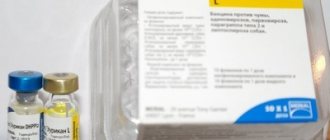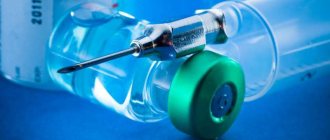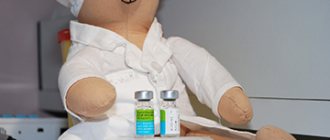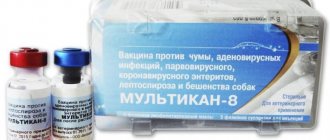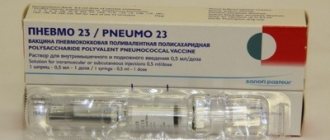To prevent the spread of dangerous infections and constantly monitor the epidemiological situation, routine vaccination of the population is normally carried out. Vaccinations are done strictly according to a specially developed calendar, taking into account the age of the patient, as well as the duration of action of the previously used drug.
Routine vaccinations include a drug such as Infanrix Penta, designed to develop immunity to several infections at the same time.
Composition and mechanism of action
This drug contains numerous ingredients that allow you to achieve the desired result. Several types of toxoid are used as the main ingredients (diphtheria, pertussis and tetanus) .
In addition, the vaccine also contains inactivated poliovirus type 3, surface recombinant antigen of the hepatitis B virus, pertactin and filamentous hemagglutinin.
In addition to the basic ones, the injection also contains excipients: medium 199, aluminum salts, water for injection, sodium chloride and some others. The medicine for vaccinations is released in the form of a suspension of 0.5 ml in each dose.
Once inside the body, toxoid and other ingredients activate the immune system, developing its resistance to the action of pathogens. To finally consolidate the result, several scheduled injections are performed.
Instructions for use
The activity of the drug does not differ from the effect produced by the corresponding mono-vaccines. But the schedule for using Infanrix Hexa and the methods of administration differ from how to proceed with the use of individual drugs. This is due to the fact that the drug contains additional components that play a binding role or facilitate the absorption of active substances. To correctly determine the schedule for using the product, you need to coordinate it with your doctor and the vaccination calendar established by the Ministry of Health.
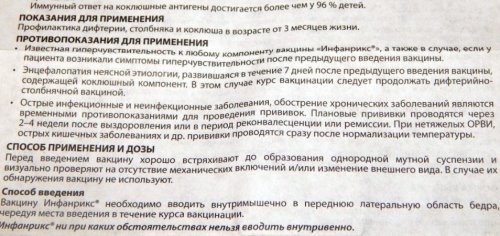
Infanrix hexa vaccination schedule
The Infanrix Hexa vaccination regimen must be agreed upon with the attending physician (that is, pediatrician or therapist), as well as with the national vaccination calendar.

It is most advisable to use this drug when you need to give injections against one of the six serious diseases that this European vaccine protects against. What are the rules for vaccination if the patient is a newborn?
- at two, four and six months;
- at two, three and four months;
- at three, four and five months.
Thus, the vaccination scheme consists of three stages, the interval between which should exceed 30 astronomical days. You can increase this interval to 40 days. Revaccination should be carried out at 11 and 13 months of life, somewhat less frequently at 18 months. If a child is older than one year or an adult intends to use the vaccine, an individual schedule is drawn up by a specialist.
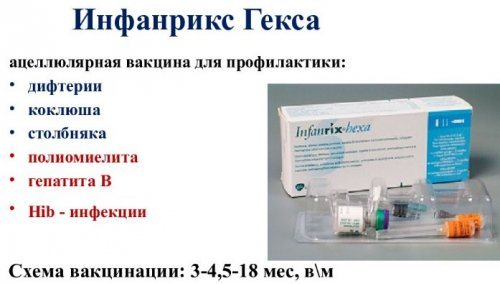
Method of administration
The optimal place for administering the drug into the body is considered to be the middle third of the anterolateral surface of the thigh. The needle should be inserted deeply to avoid entering directly into the blood. With each new injection, it is necessary to change the leg to avoid the formation of hematomas or swelling of the limb. Before injecting your leg, shake the contents of the syringe. Readiness can be determined by the homogeneity and light color of the mixture. Only then can you be vaccinated.

Indications and contraindications for use
Infanrix Penta is intended for primary immunization and repeated vaccination of children aged 6 weeks to 24 months against whooping cough, diphtheria, tetanus, polio and hepatitis B. Vaccination of young patients is carried out strictly according to the schedule prescribed by regulatory documents.
There are contraindications in the presence of which vaccination of patients is prohibited:

- allergic reaction to one of the components of the drug;
- encephalopathy;
- epilepsy and other progressive nervous diseases that cannot be controlled;
- infectious and non-infectious diseases that are in the acute stage;
- previous anaphylactic reactions to any vaccine;
- ARVI.
It is not recommended to vaccinate children over 36 months of age, pregnant or lactating women.
Indications and contraindications
Due to the acellular pertussis component, this vaccine has low reactogenicity. This feature allows it to be used when vaccinating a wide range of patients. Most often, such drugs do not cause a negative reaction in the body, but small exceptions are possible due to individual intolerance to the ingredients or allergies of the person being vaccinated. However, more serious side effects are possible.
Indications for use
Infanrix hexa develops resistance to six infectious diseases that affect both children and adults. Among them are diphtheria, whooping cough, tetanus, hepatitis B, polio, and hemophilus influenzae.

This selection of diseases makes vaccination one of the main ones as part of routine vaccination of the population.
Most often, the British drug Infanrix is used for primary vaccination and revaccination of children.
Therefore, vaccination is used during epidemics of one of these diseases, as part of the prevention of dangerous diseases. Less often - in case of contact or residence with infected people in the same area. Whatever the reason for using Infanrix, the vaccination can only be done in an official licensed medical facility.
When should Infanrix Hexa not be used?
Infanrix has standard contraindications for an anti-infective vaccine. But first of all, you need to remember that you cannot vaccinate shortly after a serious illness or during a cold until the temperature normalizes. A ban on vaccination exists when:
WE RECOMMEND THE ARTICLE!
The drug Milgamma helps from pain in the spine to complications of diabetes. Read more >>
- fever and elevated body temperature;
- established sensitivity to vaccine components;
- acute chronic diseases;
- acute infectious disease;
- immunodeficiency state of the body, including HIV, oncology.

Scheduled injections of Infanrix hexa should be carried out strictly after 2-4 weeks from the moment of recovery. Otherwise, their effect will be weakened. In the worst case, it will not appear at all at the right time.
Use by infants, nursing and pregnant women
Doctors note that there are no studies on the effects of the hex group drug on pregnant or lactating women. But there is reliable information that there are risks of using the product if the person being vaccinated is less than three years old. Studies on 169 premature infants show that if the child is underweight and has insufficient development, Infanrix Hexa can be used without any concerns. But they may have a weak immune response.

Common side effects
There is a fairly high probability of complications after vaccination. Fortunately, many potential health problems for a vaccinated person can be quickly resolved with medical intervention. The most common include:
- fever and increase in body temperature to 39.5 degrees or more;
- loss of appetite and worsening eating disorders;
- increased excitability;
- vomiting or diarrhea;
- cough, respiratory tract infections;

- itching and rash, hives or painful redness of the skin.
In addition to these symptoms, signs of the diseases against which the vaccine is effective may develop in a weakened form. But this rarely happens. The probability does not exceed 0.01%.
Serious side effects
Slightly less often, patients have to deal with more severe consequences. In approximately 0.01% of cases, vaccine recipients experienced more severe and long-lasting side effects:
- anaphylactic shock;
- neuropathy or neuritis;
- respiratory arrest;
- hypotonic state;

- encephalopathy;
- angioedema.
Under no circumstances should you inject the British drug intravenously or intradermally, since such an action violates the algorithm of the injection’s effect on the body. This, in turn, can lead to coma and even death. Cases of drug overdose have not been described in the medical literature, but it is obvious that it should not lead to it.
Interaction with other drugs
There is no information about how Infanrix Hexa works in tandem with other drugs, but the practice of using the vaccine with vaccinations against measles, rubella and mumps does not lead to negative changes in the patient’s body. Data on the use of the drug with Prevenar showed that they do not affect each other and do not make serious changes in the production of antibodies administered along with vaccines.
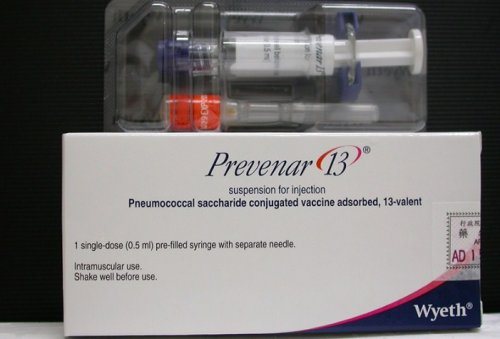
However, an increase in cases of fever has been reported.
You cannot give an injection with Infanrix and another drug at the same time.
If fever symptoms occur after concomitant use of Infanrix hexa and Prevenar, antipyretics should be used. The most commonly used are Eferalgan, Nurafen, Voltaren or Ibuklin. But it is better to simply avoid double vaccination.
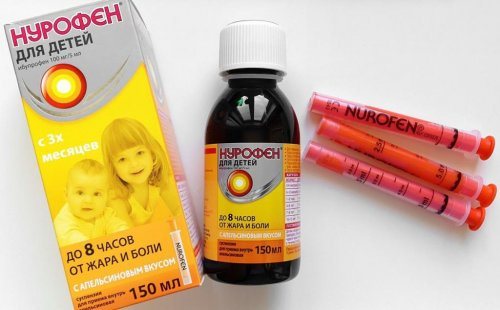
Instructions for use of the Infanrix Penta vaccine
The drug is used once, in a volume of 0.5 ml. The medicine is injected into the buttock of children over the age of 1 year, as well as into the upper thigh of newborns.
To achieve a positive result, the child must undergo a course of 3 vaccinations, during each of which the child will be injected intramuscularly with 0.5 ml of the drug. The interval between vaccines is 4 to 6 weeks.
To prevent overdose or improper use of the drug, vaccination is carried out according to one of several schemes:
- at 6, 10 and 14 weeks;
- at 2, 3 and 4 months;
- at 3, 4 and 5 months;
- at 2, 4 and 6 months.
If necessary, two-time vaccination can be used: at 3 and 5 months. Revaccination is allowed only 6 months after completion of the primary course.
Before use, the syringe with the medicine present inside must be shaken thoroughly. The shaking field checks the medicine for the presence of foreign particles that make the composition heterogeneous.
If they are present in the drug, it is better to discontinue its use. The vaccine is injected into the tissue when it reaches room temperature and has a uniform structure.
For each subsequent injection of the drug, a new place on the skin is used. This is necessary to prevent the formation of seals on the skin at the injection site of the drug.
Infanrix Penta - instructions for use, analogues, composition, indications
About the drug:
Vaccine for the prevention of diphtheria, tetanus, whooping cough, polio and hepatitis B
Indications and dosage:
- Primary vaccination and revaccination of children against diphtheria, tetanus, whooping cough, hepatitis B and polio
Vaccination schedules:
A single dose of the vaccine is 0.5 ml.
Primary vaccination:
According to the National Preventive Vaccination Calendar, the primary vaccination course consists of three doses of vaccine administered at 3, 4.5 and 6 months.
However, other three-dose primary vaccination schedules (for example, 2-3-4 months, 3-4-5 months, 2-4-6 months) and two-dose primary vaccination schedules (for example, 3-5 months) can also be used on the recommendation of a doctor. It is necessary to maintain an interval between doses of at least 1 month.
Revaccination:
According to the National Calendar of Preventive Vaccinations, revaccination is carried out once at 18 months of life.
However, on the recommendation of a doctor, revaccination can be carried out at another time, subject to an interval of at least 6 months after the last vaccination of the primary course. Thus, after a two-dose primary vaccination (for example, 3-5 months), it is preferable to administer a booster dose between 11 and 13 months of life, after a three-dose dose. course of primary immunization, a booster dose can be administered up to 18 months.
In all cases of violation of the vaccination schedule, the doctor must be guided by the instructions for use of the drug and the recommendations of the National Calendar of Preventive Vaccinations.
Method of administration:
The recommended injection site for Infanrix Penta is the anterolateral surface of the mid-thigh. The vaccine should be administered deeply intramuscularly, alternating sides for subsequent injections.
The syringe should be shaken to obtain a homogeneous whitish suspension and visually checked for the absence of mechanical inclusions and/or changes in appearance. If they are detected, you should stop using the vaccine.
Before administration, the vaccine can be kept at room temperature (21°C) for up to 8 hours.
Unused vaccine should be destroyed according to local requirements. The Infanrix Penta vaccine is not used in children over 36 months of age.
Overdose:
Cases of overdose have not been described.
Side effects:
The adverse events presented below are listed by body system and according to frequency of occurrence. The frequency of occurrence is defined as follows: very often (≥ 1/10), often (≥ 1/100 and
General reactions:
- Very common: restlessness, unusual crying, irritability, loss of appetite, fever ≥ 38 °C, fatigue
- Common: fever > 39.5 °C
- Uncommon: drowsiness, excitability
From the respiratory system:
- Uncommon: upper respiratory tract infections, bronchitis, cough
From the gastrointestinal tract:
- Common: vomiting, diarrhea
For the skin and subcutaneous fat:
- Often: itching.
- Uncommon: rash
- Rare: dermatitis
- Very rare: urticaria
Reactions at the injection site:
- Very common: pain, redness, swelling at the injection site (≤ 50 mm)
- Common: swelling at the injection site (> 50 mm)2, induration at the injection site
- Uncommon: diffuse swelling of the injected limb, sometimes involving the adjacent joint
Contraindications:
- Encephalopathy of unknown etiology that developed within 7 days after previous administration of a vaccine containing pertussis component. In this case, the administration of the whooping cough vaccine should be discontinued and vaccination should be continued only with the diphtheria-tetanus vaccine, as well as vaccines against hepatitis B and polio.
- Acute infectious and non-infectious diseases, exacerbation of chronic diseases are temporary contraindications for vaccinations. Routine vaccinations are carried out 2-4 weeks after recovery or during the period of convalescence or remission. For mild acute respiratory viral infections, acute intestinal diseases, etc., vaccinations are carried out immediately after the temperature has normalized
- Hypersensitivity to the active ingredients of the vaccine or to any of the components of the vaccine, as well as to neomycin and polymyxin
- Hypersensitivity after previous administration of diphtheria, tetanus, pertussis, hepatitis B and polio vaccines
Since the Infanrix Penta vaccine is used in accordance with the National Schedule of Preventive Vaccinations for Children, there is no data on the effect of the drug on pregnancy and breastfeeding.
Interaction with other drugs and alcohol:
Clinical studies have shown that Infanrix Penta can be used concomitantly with the vaccine to prevent infection caused by Haemophilus influenzae type b. In these studies, vaccines were administered to different areas of the body.
As with other vaccines, it can be expected that patients receiving immunosuppressive therapy may not achieve an adequate immune response.
The Infanrix Penta vaccine cannot be mixed with other vaccines in the same syringe.
Composition and properties:
- Diphtheria toxoid not less than 30 IU
- Tetanus toxoid not less than 40 IU
- Pertussis toxoid 25 mcg
- Hemagglutinin filamentous 25 mcg
- Pertactin 8 mcg
- Recombinant hepatitis B virus surface antigen (HBsAg) 10 μg
- Poliomyelitis virus type 1 inactivated 40 IU D-antigen
- Poliomyelitis virus type 2 inactivated 8 units of D-antigen
- Poliovirus type 3 inactivated 32 units of D-antigen
- Excipients: medium 199 (M 199) 1.15 mg (including amino acids 0.09 mg), sodium chloride 4.5 mg, aluminum phosphate (in terms of aluminum) 0.2 mg, aluminum hydroxide (in terms of aluminum) 0.5 mg, water for up to 0.5 ml.
Release form:
- Suspension for intramuscular administration.
Pharmachologic effect:
Infanrix Penta is recommended:
For primary vaccination of newborns aged 3, 4 and 5 months, to prevent diseases of diphtheria, tetanus, whooping cough, hepatitis B and polio.
Storage conditions:
Store at a temperature of 2 to 8°C, protected from light. Do not freeze. Keep out of the reach of children. Shelf life – 3 years.
general information
- Sales form:
on prescription
- Current issue:
Vaccine against diphtheria, tetanus and whooping cough
- Manufacturer:
Piluli
Side effects of vaccination
As a rule, after the vaccine is administered, pain occurs at the injection site. This manifestation is not considered a serious pathology and goes away within 2-3 days.
The following types of adverse reactions may also occur after vaccination:

- increased fatigue;
- headache;
- temperature rise to 38 C or higher;
- pain and severe swelling at the site of vaccine administration;
- nausea, diarrhea or vomiting;
- allergic reaction;
- enlarged lymph nodes;
- anaphylactic shock.
If the conditions listed above rapidly intensify, this indicates the development of serious complications. Therefore, in such situations, it is necessary to immediately seek help from a doctor.
Drug interactions
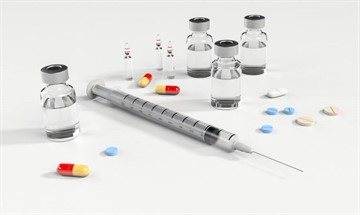
Studies conducted in clinical settings have shown that this type of vaccine is successfully combined with the Haemophilus influenzae type b vaccine, intended to prevent infections.
During testing, the vaccines were administered to different parts of the body and did not cause side effects. If the patient uses drugs that have an immunosuppressive effect, the desired immune system response after using the vaccine may not occur.
Infanrix Penta should never be mixed with other vaccines in the same syringe . Otherwise, an unpredictable reaction of the body to a portion of biological material entering the body may follow.
Analogues and substitutes of the drug
As mentioned earlier, Infanrix does not have complete analogues produced in Russia. But some people prefer to use Russian-made drugs, as well as budget European analogues of Infanrix. At a minimum, because their price is almost an order of magnitude different from the cost of this vaccine. Is it better to use DPT, Prevenar, Pentaxim or Infanrix Hexa for routine vaccination? It is worth comparing the devices.
| A drug | Active substance | Manufacturer | Price |
| DTP | Vaccine diphtheria, pertussis and tetanus | Russia | Two doses cost from 1113 rubles to 1130 rubles |
| Pentaxim | Vaccine for the prevention of diphtheria, whooping cough, polio, tetanus and infections caused by Haemophilus influenzae type B | France | Price starts from 1329 rubles |
| Prevenar | Vaccine for the prevention of pneumococcal infections (Pneumococcal vaccine) | USA, UK and Ireland, Russia | The cost of the drug starts from 1713 rubles |
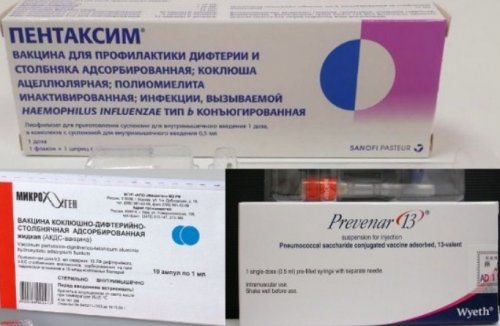
Sometimes, instead of complex Infanrix, individual vaccines or a more expensive drug from the same company, Infanrix Penta, are used. But from a financial point of view this is not profitable. Therefore, it is easier to use a multifunctional British product.
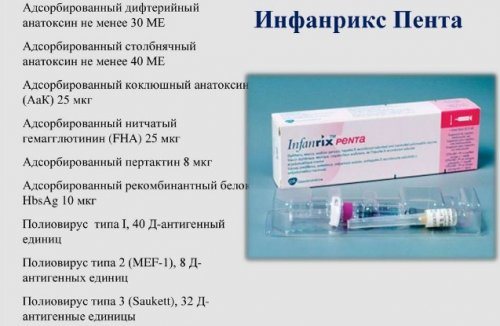
Prices and conditions for dispensing from pharmacies
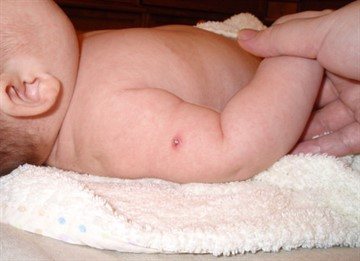
The drug is sold in pharmacies only with a prescription written by a doctor. It is impossible to purchase medicine freely in pharmacies in the Russian Federation.
The price of the Infanrix Penta vaccine may vary. Everything will depend on the seller’s pricing policy. Therefore, it is better to purchase the drug only in those pharmacies that directly cooperate with the supplier. This way you can avoid unnecessary markups by purchasing the medicine at an affordable price.
If necessary, you can purchase the vaccine without intermediary markups by taking advantage of the seller’s special offers.
Analogs
If the use of the drug for any reason is impossible, the use of vaccine analogues is allowed.

Analogs include:
- Hexaxim suspension;
- Boostrix Polio suspension;
- Infanrix IPV Hib suspension;
- Pentaxim kit;
- some other drugs.
The selection and use of analogues should be carried out exclusively under the supervision of the attending physician. Independent use of a particular vaccine may result in side effects that can be dangerous not only to the patient’s health, but also to his life. Synonyms for the Infanrix Penta vaccine may have different prices.
Reviews
Reviews about vaccination with Infanrix Penta:
- Rimma, 29 years old . We had to get DTP, as well as vaccinations against hepatitis B and polio. The doctor said that there is a vaccine against 5 viruses - Infanrix Penta. At first it was scary to inject, because there was a lot of information on the Internet about a large number of side effects. I asked the doctor. She calmed me down. She said that Infanrix Penta causes the minimum of side effects listed. And even if they occur, they pass quickly and do not harm the child. And so it happened. In the evening after the vaccination, the baby’s temperature rose, but the next morning everything went away;
- Marina, 40 years old . I work in a children's clinic. Looking at the reaction of our little patients to the vaccine, I can say that Infanrix Penta has less pronounced reactogenicity than, for example, DTP. But despite this, children can also develop side effects. But this happens less often, and the unpleasant symptoms themselves go away faster than after using other vaccines of a similar nature.



